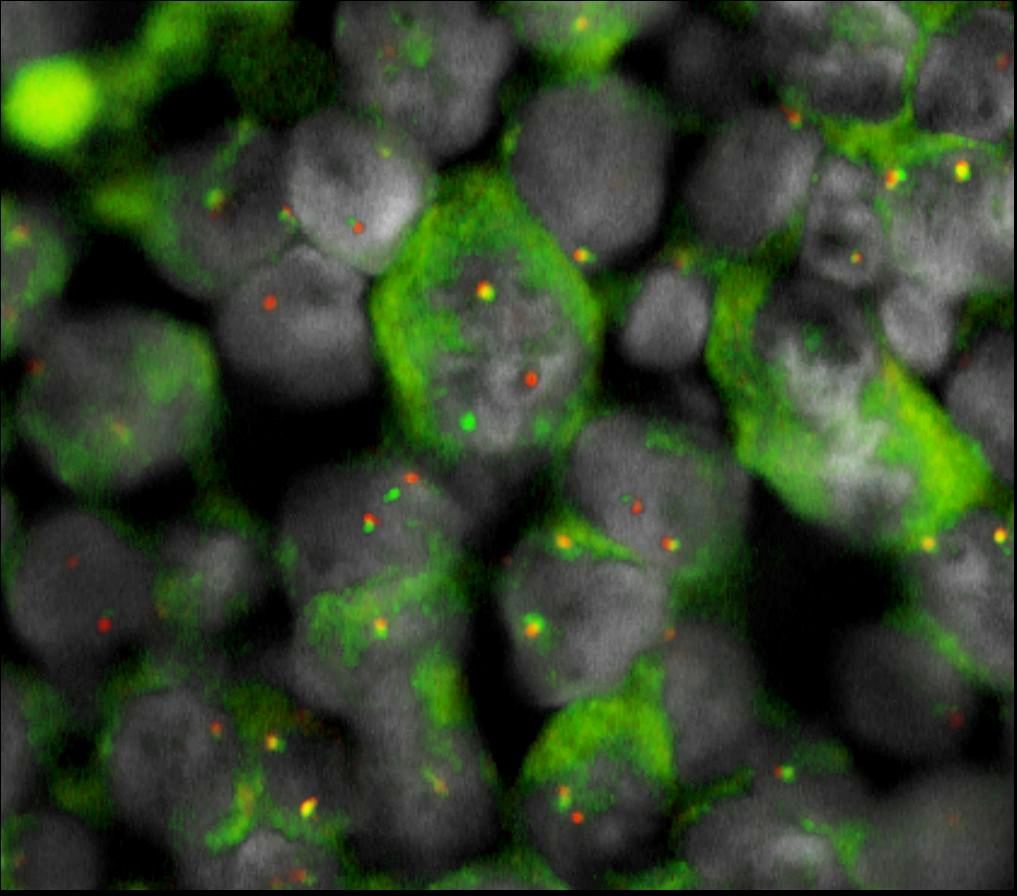
XL ALK BA
Break Apart Probe
- Order Number
- D-6001-100-OG
- Package Size
- 100 µl (10 Tests)
- Chromosome
- 022
- Regulatory Status
- IVDD
IVDR Certification
MetaSystems Probes has already certified a wide range of FISH probes, according to IVDR.
This product remains IVDD-certified until further notice.
Discover all IVDR-certified products
XL ALK BA consists of an orange-labeled probe hybridizing to a region within the ALK gene at 2p23 and a green-labeled probe hybridizing distal to the ALK gene region at 2p23.
Probe maps for selected products have been updated. These updates ensure a consistent presentation of all gaps larger than 10 kb including adjustments to markers, genes, and related elements. This update does not affect the device characteristics or product composition. Please refer to the list to find out which products now include updated probe maps.
Probe map details are based on UCSC Genome Browser GRCh37/hg19, with map components not to scale.
The EML4/ALK fusion gene is responsible for approximately 3-5% of non-small-cell lung cancer (NSCLC). The vast majority of cases are adenocarcinomas. Two other fusion partners of ALK have been reported in lung cancer - TFG and KIF5B. Up to 12 other translocation partners have been described in anaplastic large-cell lymphomas (ALCL), renal cancer, esophageal squamous cell, colon, and breast carcinoma. Anaplastic lymphoma kinase (ALK) is a receptor tyrosine kinase which was discovered in anaplastic large-cell lymphoma (ALCL).
The formation of a fusion protein with a partner through chromosomal translocations is the most common mechanism of ALK overexpression and ALK kinase domain activation. The ALK inhibitor crizotinib has increased the significance of detecting ALK rearrangements in lung cancer and ALCL.
Clinical Applications
- Solid Tumors

Normal Cell:
Two green-orange colocalization/fusion signals (2GO).

Aberrant Cell (typical results):
One green-orange colocalization/fusion signal (1GO), one separate green (1G) and orange (1O) signal each resulting from a chromosome break in the relevant locus.

Aberrant Cell (typical results):
Two green (2G) and one orange (1O) signal resulting from loss of one orange signal.
- Kutok et al (2002) J Clin Oncol 20:3691-3702
- Perner et al (2008) Neoplasia 10:298-302
- Shaw et al (2009) J Clin Oncol 27:4247-4253
Certificate of Analysis (CoA)
or go to CoA Database




